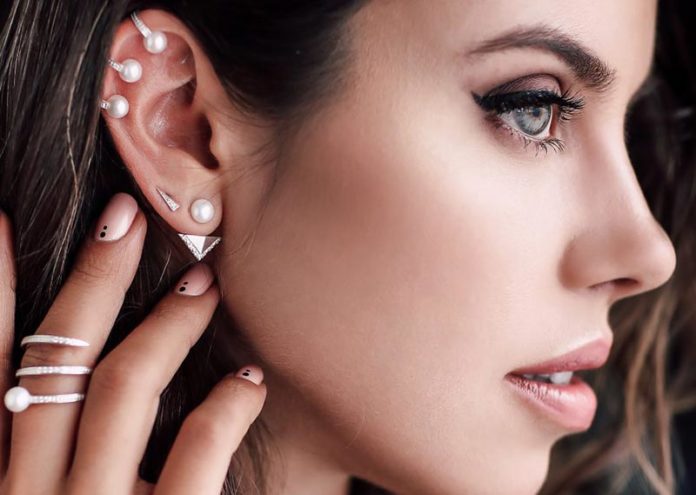Ear piercing is generally safe if done by a qualified piercer in a clean setting. However, it’s important to be aware of potential risks like infection. While everyone’s pain tolerance is different, piercing a lobe with a needle is usually less painful than piercing cartilage using a piercing gun.
Experience
Ear piercing is not without risks, especially at locations where the service isn’t overseen by a licensed ear piercing professional. These locations may follow safe practices, but any piercing comes with complications like metal allergies (especially nickel) and keloids, which can be painful and require medical attention.
With professional ear piercing solutions, you are assured that they use sterilized tools to prevent infections, but even more important is their experience. In addition to avoiding infection, the piercer can offer tips on caring for your new piercing, which can speed healing times and reduce inflammation and irritation.
Although earlobe piercing is the most common, other parts of the ear (like cartilage) can also be pierced. It’s best to leave these to a seasoned piercer who can advise you on which pieces will fit in your anatomy. A piercer can also help you with unique shapes, such as forward helix and auricle piercings, which require knowledge of the anatomy and proper placement to avoid damage or infections.
Hygiene
Professional piercers work in clean environments and use sterilized equipment. Many piercings require a hollow needle, which not only pierces through the earlobe but creates space for the jewelry to rest. This method results in a cleaner hole and minimizes the risk of infection and scarring.
Attempting to pierce your ears can lead to contamination with bacteria, which can cause infection. Additionally, shattering the cartilage during the process can result in an irreversible bump called a keloid. Moreover, even if you do not develop an infection during your DIY ear piercing, you can still get hepatitis B and C, tetanus, or HIV from the dirty equipment used to pierce your ear. The best way to prevent these risks is by visiting a professional piercer in a reputable shop or parlor that adheres to strict hygiene standards.
Knowledge
Whether you have just gotten your first pair of studs or are adding to an existing piercing, a medical professional can give you detailed instructions on caring for it. This can help minimize infection and other complications. The person performing your ear piercing should know the best placement locations for each type and understand how each piercing heals. You should also talk to the piercer about your medical history, including allergies and other health problems.
Your body’s natural healing abilities and the quality of the jewelry play a role in how quickly your piercing heals. Choosing a reputable piercing professional who follows strict sterilization practices and uses high-quality jewelry is important. You should also avoid consuming alcohol or taking painkillers before your appointment, as these substances can thin your blood, which can increase bleeding during the piercing and lead to a greater risk of infection.
Safety
While piercing is generally considered safe, it does come with risks. Complications include infection, which can cause redness, pain, swelling, and discharge. Infections in cartilage tissue are more serious and have been linked to a complication called auricular chondritis, which can lead to the collapse of structural ear tissue, requiring antibiotic treatment and reconstructive surgery to repair. There are other risks associated with ear piercing, including nerve damage or scarring and the risk of picking up blood-borne infections such as hepatitis B and C and human immunodeficiency virus (HIV) from contaminated equipment. This is another reason to only go to licensed, professional ear piercers who use sterile techniques and equipment from start to finish.















